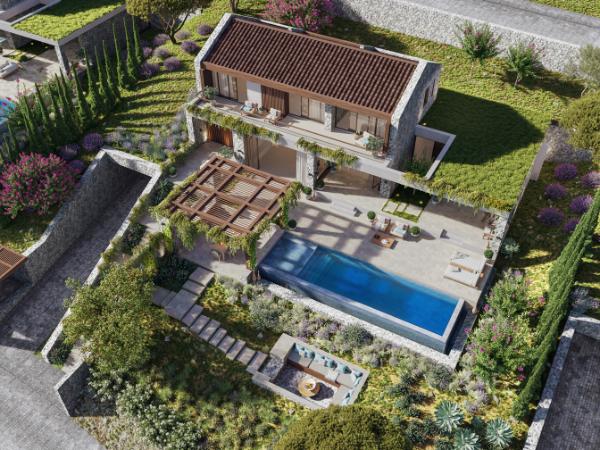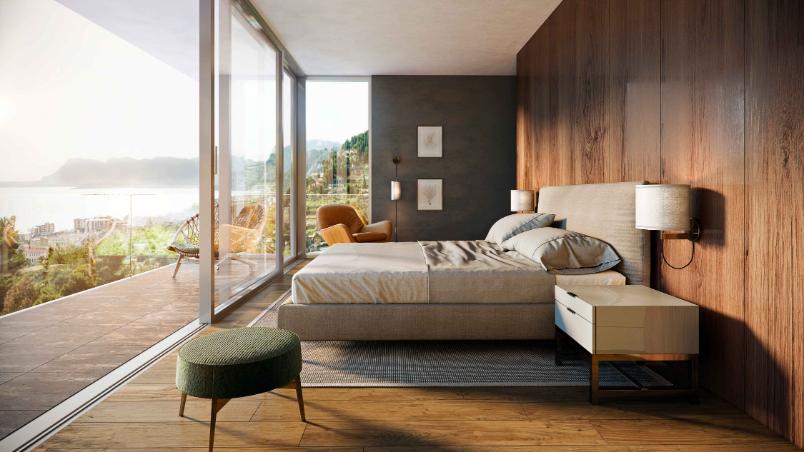Architecture, Engineering, and Construction (AEC) is one of the most competitive industries. This means that adopting the latest technology is a top priority for any company within the AEC industry.
Technologies make work processes more efficient and also expand marketing opportunities. Among the most valuable technologies are architectural visualization and 3D rendering.
They have been a trend for the last few years, so many clients are often concerned about the architectural rendering cost.
In this guide, we will look at architectural rendering, how the price of services is formed, and how you can reduce costs.
The Role Of 3D Rendering
Rendering is the best way to transform project requirements into photorealistic images.
Today, architectural rendering technology is widely used for both residential and commercial projects.
Key tasks that 3D visualization solves include:
- Digitization of various real estate objects
- Creating an impressive first look at the project
- Precise drawings and memorable presentations
How the architectural visualization of the project will look largely depends on your goals and budget.
3D Rendering Types
There are several types of visualizations, each of which has its features. Rendering services may vary depending on a number of factors, including the specific preferences and needs of a client.
The goals and aspects of the project (marketing, presentations, planning, design analysis, etc.) also play an essential role.
Typically, 3D visualizations are of the following types:
- Interior. The goal is to demonstrate the interior spaces visually. The key focus is on details, furniture, decorations, and room lighting.
- Exterior. The goal is to demonstrate the appearance of the object visually. The key focus is on the overall appearance, as well as the architectural and landscape design.
- Floor plans. The goal is to provide a detailed understanding of the organization of space. Attention is paid to a three-dimensional model of the property’s layout, which can be viewed from different angles.
- 360. The goal is to demonstrate a complete 360-degree view of the space. Panoramic images are commonly used in presentations.
- Virtual tours. The goal is to explore space in a virtual environment. Tours are immersive and often interactive.
3D Architectural Rendering Pricing
The cost of 3D rendering varies depending on the specifics of the project. Among the main factors to consider are the type of project and delivery time.
Also, the rendering format matters. The format can be static or dynamic.
- The static format refers to still images that are something like a realistic photograph of an object.
- The dynamic format refers to animated visualizations that allow you to explore an object from different angles, creating the effect of a guided tour.
At the same time, even renders of the same format may vary significantly in price since the size, type, and timing of the project must also be taken into account.
Typically, the pricing for 3D rendering is:
- $800–3000 for high-quality photorealistic images (static format);
- $5000-20000 for animated visualizations (dynamic format);

The Main Price Factors
Here are some of the key factors that most affect the cost of architectural 3D rendering services:
Rendering Time
Rendering is one of the main aspects of pricing. Conceptually, rendering means processing visualizations. The time required to complete the rendering directly depends on the realism and detail of the image.
It is worth noting that rendering is among the key cost factors when it comes to dynamic formats. In the case of static visualizations, the cost of rendering is a secondary factor.
Project’s Size
Another important aspect is the size of the project files. The more high-quality, realistic, and full-format visualizations required, the higher the cost since such tasks need more effort, time, and computer power to be accomplished.
Delivery Time
The next factor is the deadline. Here, the cost largely depends on how quickly you need the result. The closer the deadline, the higher the price since the team will have less time to create renderings, which means intensive and overtime work in this case.
Complexity Of Work
The complexity of the project and the scope of work are perhaps the core factors worth paying attention to.
Creating architectural 3D visualizations usually requires the participation of at least three specialists: a project manager, a 3D artist, and a post-production artist.
The complexity of the project depends largely on the required level of detail in the visualizations, the number of unique elements, texturing, etc. Then, the type of post-processing is another pricing factor (meticulous detailing, retouching, color correction, etc.).
Available Pricing Strategies
3D architectural visualization services usually offer two types of pricing options: pay-per-image or pay-per-project.
- Pay-per-image means you pay a fixed price for each image. This option is typically used for small projects. Also, with pay-per-image, the company may offer scalable pricing if the client orders many images.
- Pay-per-project means you pay the entire cost of the project. This option is typically used for large projects that involve different types of rendering and numerous rendered objects. The cost of the service depends on the scale of the project, and companies usually offer individual prices.
What You Need To Know
To make an informed decision and pay a reasonable price for architectural visualization services, you should keep in mind the following aspects:
Feedback
Maintain feedback with the team to avoid unnecessary changes and adjustments, as well as get the exact project you need without additional costs.
Custom Pricing
Choose companies that can provide you with a custom quote based on the scope and complexity of the project instead of a flat fee for the entire project.
Check Finished Projects
Before hiring a company, ask them to show you their previous projects. This is a critical step because unscrupulous companies may trick you with high-quality renders at low prices. However, the result will be noticeably different from what was expected.
Provide Specific Information
Be specific when asking for a quote. The more detailed you formulate the task and provide examples and materials, the better result you will get when the project is ready.
Communication & Support
Choose companies with good customer support, as it is important to ensure constant communication during the implementation of the project to prevent mistakes and misunderstandings.
Collaborate With Professionals
Check the ratings and reviews of the company before ordering a project. Ensure you hire a dependable team that understands your requirements and meets your budget.
































